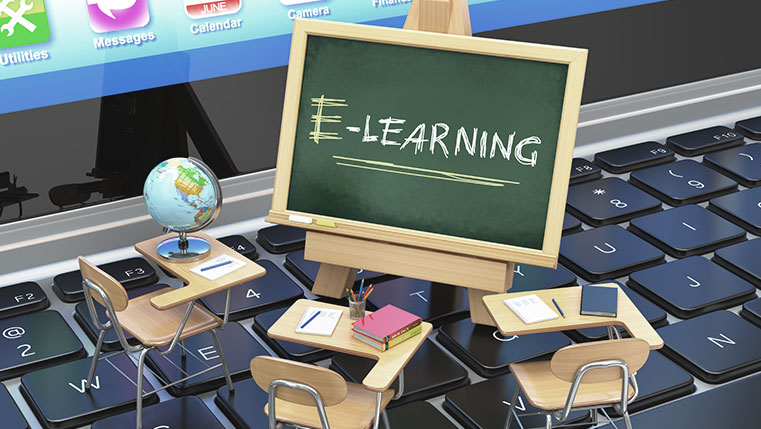Almost three years ago when Mr. COVID introduced itself to mankind some 1.2 Billion students, worldwide, had to abruptly abandon their classrooms in favor of online means to continue their education. 1.2 Billion, which is almost one in every seven people alive on Earth, at that time.
Initially, critics and COVID deniers joined hands to campaign against the sudden closure of schools.
Online education was not yet a super famous buzzword, unlike today, and many folks genuinely believed that current e-learning systems will not be able to keep up with such a huge and sudden influx of students. And who could blame them? E-learning was taking off at the time but it was still in its infancy. And no one likes to rely on infants to teach their children.
But despite its many limitations and constant bashing, the e-learning setup held up. For the better part of the next 2 years online education kept the children of the world, at the very least, connected to the learning process.
Today, things are different. The technology has advanced, the systems are more robust and any apprehensions people had about e-learning have fizzled out against the onslaught of the pandemic.
E-LEARNING A LIFESAVER FOR PUPILS FROM REMOTE AREAS
Even before the virus forced every student in the world out of their classrooms there were multitudes of pupils who did not have this luxury to begin with. Millions of children, particularly, in the third world lacked physical access to education due to poor schooling infrastructure.
For this reason, e-learning had already established itself as a reliable alternative to classrooms. In this sense, several poorer nations were already ahead of their more developed counterparts when it comes to the next education revolution.

And American Internet Service Providers played a key role in helping these developing nations fill the connectivity gap which made mass e-learning possible in the first place. For instance, a whopping fifty thousand schools across the world, particularly in Latin America, rely on Hughesnet Satellite Internet to help their students stay connected to online learning resources.
Even in the continental U.S. distance learning supported by fast-paced satellite broadband has aided open access to education for children residing in remote areas.
But e-learning, distance learning, or online education, choose what you want to call it, is not a band-aid to be put on when physical education fails us. It is a phenomenon in its own right which, according to several experts, has the potential to replace physical education altogether.
Why would we be abandoning the classroom to sit in a room and stare at a screen, you ask. Well, it’s because of the countless unique advantages of e-learning, two of the most radical ones are listed below.
SELF-PACED, FLEXIBLE & CONTINUOUS LEARNING
The industrial revolution is a thing of the past. And as manufacturing jobs are in a constant state of decline the knowledge economy is booming and is adding thousands of well-paying jobs to the employment pool. Many of these jobs require workers to keep up with rapidly evolving technological trends and advancements.
The tech industry is in continuous need of workers with novel skills while many skills die down rapidly. The “get a degree at 20 and implement what you’ve learned for the rest of your life” approach is dead. Modern employees need continuous learning.
And it’s, obviously, very hard for professional workers to quit their jobs and re-introduce themselves to the physical classroom just for the sake of advancing in their jobs, sounds counter-intuitive doesn’t it?
The solution is e-learning platforms. Websites like Udemy and Code Academy offer a vast array of general and specialized courseware that can help professionals stay up-to-date without having to leave the comfort of their homes.
There is inherent flexibility to e-learning. You can choose your own course, decide on the instructor, make your own timetable, and most importantly learn at your own pace.
The learning experience on these platforms is customized to suit the needs of the pupil and not the instructor. No wonder their business is booming. Udemy claims some 12 million students while its competitor Teachable boosts another 3 million students.
And many established universities are following suites. From Harvard to Stanford, several established brands in the education sector have brought their own online game up to speed. Universities are now offering short courses, diploma courses, and even entire degree programs online.

This brings us to our next point.
THE INTERNATIONALIZATION OF HIGHER EDUCATION
The higher educational facilities available to citizens in the global North, which many of us take for granted, are coveted dreams for millions in the global South.
Currently, if someone from the third world wants to get an education in our lands they have to go through extremely lengthy and exhaustive visa processes. Many of them even risk being denied visas even after scoring scholarships in highly prestigious Western institutions.
Online education has and will in the future help reduce this global divide as well. E-learning has led to the internationalization of education.
People from all around the world can now have easy access to repositories of knowledge located in the first world. This increased access will benefit our universities and these pupils alike. And will also lead to the standardization of global higher education heralding a degree of intellectual connectivity which the world has never seen before, throughout its history.
FINAL THOUGHTS
The pandemic may have accelerated the shift to e-learning but it did not cause it. E-learning was already thriving because contrary to popular belief e-learning is not merely a backup for physical education but its future. No wonder the industry has grown by an astonishing 900 percent since its inception.


